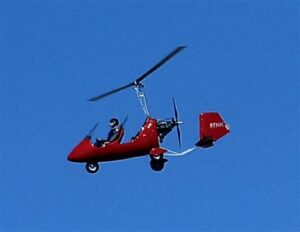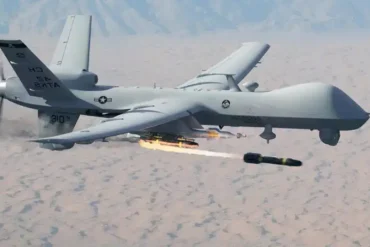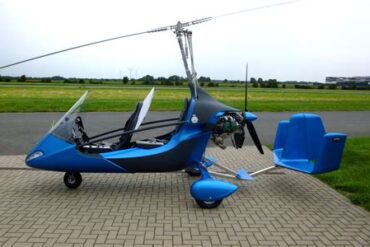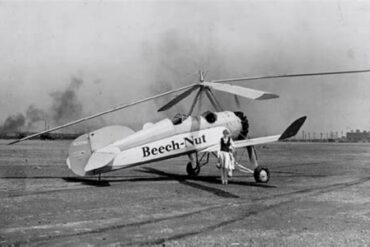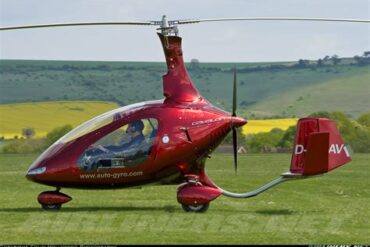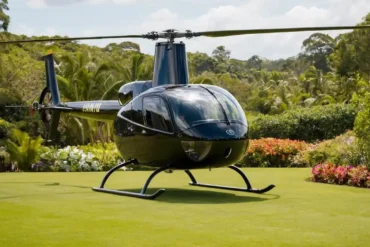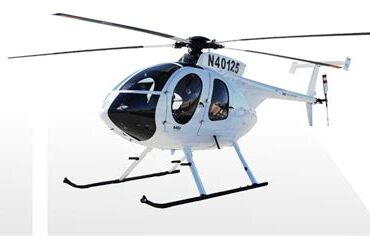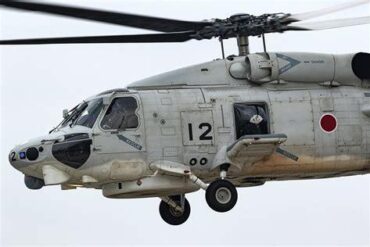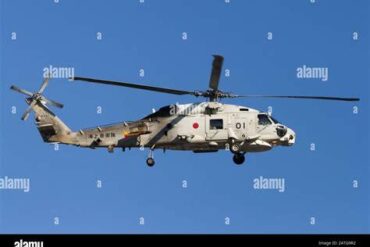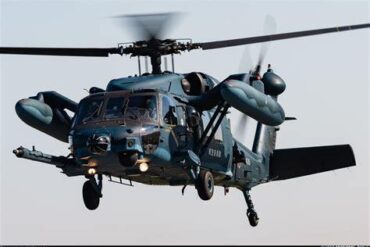When it comes to rotary-wing aircraft, autogyros and helicopters stand out as two unique and versatile flying machines. Although they share similarities in their ability to take off and land vertically, they are fundamentally different in design, operation, and application. In this comprehensive comparison, we will explore the key differences and similarities between autogyros and helicopters, covering aspects such as aerodynamics, design and structure, performance, cost, and safety.
1. Understanding the Basics: What is an Autogyro? What is a Helicopter?
Before diving into the specifics, it’s important to understand what defines an autogyro and a helicopter.
1.1. Autogyro: The Basics
An autogyro, also known as a gyroplane or gyrocopter, is a type of rotorcraft that uses an unpowered rotor in free autorotation to develop lift. The forward thrust is provided by an engine-powered propeller. The key characteristic of an autogyro is that its rotor is not powered directly; instead, it spins due to aerodynamic forces as the aircraft moves forward, creating lift.
1.2. Helicopter: The Basics
A helicopter is a rotorcraft in which the rotors are driven by an engine, providing both lift and thrust. This allows a helicopter to hover, fly forward, backward, and laterally, and to take off and land vertically. Helicopters are more complex in terms of design and operation compared to autogyros due to the need for a powered rotor system.
2. Aerodynamics: How They Fly
The aerodynamics of autogyros and helicopters are fundamentally different due to the way their rotors operate.
2.1. Autogyro Aerodynamics
In an autogyro, the rotor blades are not powered by the engine. Instead, they rotate freely in the airflow as the autogyro moves forward, a process known as autorotation. This is similar to the autorotation mode of a helicopter when it experiences engine failure. The rotor’s autorotation generates lift, while the engine-powered propeller provides the necessary forward motion. The rotor of an autogyro operates at a lower speed compared to a helicopter’s rotor, resulting in different flight characteristics.
2.2. Helicopter Aerodynamics
Helicopters rely on powered rotors for both lift and thrust. The main rotor blades are driven by the engine, which creates the lift needed to hover and fly in any direction. The tail rotor (or other anti-torque mechanisms) counters the torque effect of the main rotor, stabilizing the helicopter and allowing for controlled flight. The ability to vary the pitch of the rotor blades (collective and cyclic control) enables helicopters to perform a wide range of maneuvers.
3. Design and Structure: A Closer Look
The design and structural differences between autogyros and helicopters are significant and impact their performance and capabilities.
3.1. Autogyro Design
Autogyros typically have a simpler design compared to helicopters. The primary components include the main rotor, a propeller (usually located at the rear or front), a fuselage, and a tail assembly. The simplicity of the autogyro’s design makes it lighter, easier to maintain, and generally more affordable. Autogyros are often designed with a pusher configuration, where the propeller is located behind the pilot, although some models feature a tractor configuration with the propeller at the front.
3.2. Helicopter Design
Helicopters have a more complex design due to the need for powered rotors and the associated control systems. The main components of a helicopter include the main rotor system, tail rotor or other anti-torque device, engine, transmission, fuselage, and landing gear. The complexity of the rotor system, which requires precise control mechanisms such as cyclic and collective pitch controls, makes helicopters more challenging to design, build, and maintain. The presence of the tail rotor adds to the overall complexity, as it must be carefully coordinated with the main rotor.
4. Performance Comparison
Performance is where the differences between autogyros and helicopters become more apparent, especially in terms of speed, range, and maneuverability.
4.1. Autogyro Performance
Autogyros generally have lower maximum speeds compared to helicopters, with typical cruise speeds ranging from 50 to 100 mph (80 to 160 km/h). Their range is also typically shorter, with most autogyros capable of flying between 200 to 400 miles (320 to 640 km) on a full tank. However, autogyros excel in low-speed flight and are highly stable in turbulence. They can operate in windy conditions that might challenge other light aircraft. The simplicity of their design also means they can be more fuel-efficient.
4.2. Helicopter Performance
Helicopters, on the other hand, are capable of much higher speeds, with modern helicopters reaching cruise speeds of 150 to 200 mph (240 to 320 km/h) or more. They also offer greater range, often exceeding 400 miles (640 km) depending on the model and configuration. Helicopters are highly maneuverable, able to hover in place, and perform vertical takeoffs and landings in confined spaces. These capabilities make helicopters versatile for a wide range of missions, from search and rescue to military operations.
5. Cost Considerations
The cost of owning and operating an autogyro versus a helicopter varies widely, influenced by factors such as purchase price, maintenance, fuel, and training.
5.1. Autogyro Costs
Autogyros are generally more affordable to purchase and operate than helicopters. The initial purchase price of an autogyro can range from $50,000 to $150,000, depending on the model and features. Operating costs are lower due to the simplicity of the aircraft, which translates into lower maintenance expenses and fuel consumption. Additionally, pilot training for an autogyro is often less expensive and less time-consuming than for a helicopter.
5.2. Helicopter Costs
Helicopters are significantly more expensive, with prices for new light helicopters starting at around $300,000 and easily exceeding several million dollars for more advanced models. Operating costs are also higher due to the complexity of the systems involved, the need for more frequent and intensive maintenance, and higher fuel consumption. Helicopter pilot training is also more demanding, requiring more flight hours and advanced certifications, which adds to the overall cost.
6. Safety Aspects
Safety is a critical consideration for any aircraft, and both autogyros and helicopters have unique safety profiles.
6.1. Autogyro Safety
Autogyros are generally considered to be safe due to their inherent design. The unpowered rotor in autorotation ensures that the aircraft can glide to a controlled landing even if the engine fails. This characteristic makes autogyros less prone to certain types of accidents that affect other aircraft. However, as with any aircraft, proper maintenance, pilot training, and adherence to operating limits are essential to ensuring safety.
6.2. Helicopter Safety
Helicopters are versatile but require careful operation to ensure safety. The complexity of the rotor systems, the potential for mechanical failures, and the higher demands on pilot skill make helicopters more challenging to operate safely. Engine failure in a helicopter requires quick and precise pilot action to enter autorotation and perform a safe landing. However, with advancements in technology and rigorous pilot training, helicopters have become increasingly safe for a wide range of missions.
7. Applications and Use Cases
Both autogyros and helicopters are used for various purposes, but their differing capabilities make them suitable for different roles.
7.1. Autogyro Applications
Autogyros are often used for recreational flying, aerial photography, and agricultural applications such as crop dusting. Their low operating costs and stability in turbulence make them ideal for these roles. In some cases, autogyros are also used for police surveillance and other light utility roles, where their simple design and cost-effectiveness are advantageous.
7.2. Helicopter Applications
Helicopters are used in a wide range of critical roles, including search and rescue, medical evacuation (medevac), military operations, law enforcement, aerial firefighting, and transportation of personnel and cargo in difficult-to-reach areas. The ability to hover, perform vertical takeoffs and landings, and operate in confined spaces makes helicopters indispensable for these missions.
Conclusion: Autogyro vs Helicopter
In conclusion, autogyros and helicopters, while both are rotary-wing aircraft, serve different purposes based on their design and capabilities. Autogyros offer simplicity, affordability, and stability, making them well-suited for recreational and light utility roles. Helicopters, with their complex design and unparalleled versatility, are essential for a wide range of critical applications. Understanding the strengths and limitations of each type of aircraft is crucial for selecting the right tool for the job.
